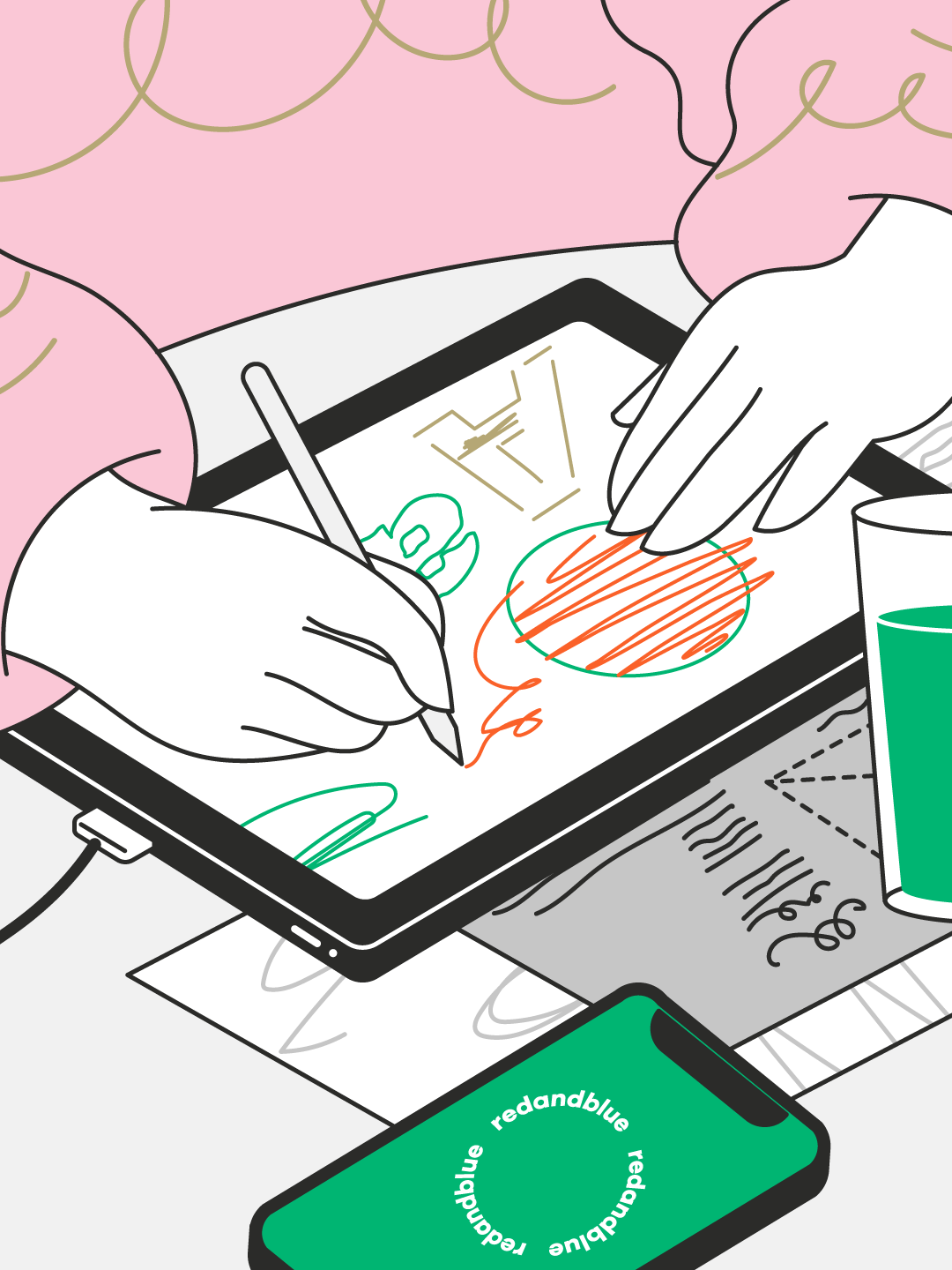Service
Usability research
Usability research and testing help improve customer understanding of websites when conducted regularly. The collected customer data can thus be harnessed to build a highly personalised, engaging, and immersive customer experience.

Usability research helps to find answers to questions such as:
- How easy is it for users to find the information they need on the website?
- Is the website’s navigation clear and intuitive?
- How quickly can users complete a specific task on the website?
- Which parts of the website attract the most interest or cause the most confusion?
- How well does the website meet users’ expectations and needs?
- What problems do users encounter on the website, and how could they be improved?
- How well do different user groups manage to use the website?
Usability testing as part of usability research
Usability testing as part of usability research
Usability in, for example, a web service can be divided into five quality criteria: learnability, efficiency, memorability, error handling, and satisfaction (source: Nielsen Norman Group). Usability testing plays a crucial role in identifying usability issues that can, at worst, hinder or completely prevent the use of the service. Finding usability problems and improving usability are integral parts of a web service that is equitable for all users.
Five reasons to conduct usability research
Usability research helps web developers better understand user needs and visitor paths on the website. The results gathered from the research can be used to enhance the user experience, ensuring that the website is as user-friendly as possible and meets user needs.
When websites are designed according to user needs, users are more likely to be satisfied with the experience and spend more time on the site. This increases user engagement and potentially traffic to the site, thereby positively impacting overall business performance.
Usability research helps identify and fix usability issues as early as possible. Conducting research during the design phase, while the site is still a clickable prototype, prevents errors from moving into the technical implementation phase. This allows the focus to be on creating new features during subsequent development.
The user experience of a website is a crucial factor in competitiveness. Well-designed and user-friendly websites can help distinguish from competitors and attract more users to the site.
Feedback collected from target groups through usability research is often more detailed and higher quality compared to feedback received through traditional channels. Quality feedback improves customer understanding and provides examples of problem areas that might otherwise go unnoticed on the site.
When is a good time to conduct usability research?
Usability research should be integrated into the web service design process, no matter what stage of the project you are in.
Typically, usability research is conducted during one of the following stages:
- When designing a new website. Usability testing can also be performed on an existing website to identify potential issues or improvement suggestions before starting the development of a new site.
- During the prototype phase of a new website design. Usability research can be conducted when a prototype or preliminary version of the website is ready. This allows for gathering feedback on user paths and site performance before beginning technical development.
- After the release of the web service. Usability research helps assess how the updated site performs and meets user needs. The results of the research can be used to plan the task list for further development, consider how changes impact the user experience, and identify areas for improvement.

A successful web service understands its target audience’s preferences
In summary, usability research and testing provide feedback and genuine experiences from using a website or service that are difficult to replace or simulate. Improving user experience is a true competitive advantage that benefits both customers and staff.
If you are planning a website redesign or need insights into the usability of a newly launched website to support further development, usability research could be beneficial for you.
We can help you find the best solution for your service and design research that identifies effective user paths and service bottlenecks.
Usability research for web services
Option 1: Usability research with five target group representatives
A usability study conducted with five individuals representing a relevant target group. The testing can be done either remotely or in person.
In the study, representatives of the target group perform various tasks using the web service prototype. The facilitator observes and reacts to user feedback, asking follow-up questions as needed. The results of the study are compiled into a report, and based on the results, changes to the site’s user interface are suggested. The workload includes user recruitment and scheduling.
€3 900 + VAT
Option 2: Usability research with a broader target group
A usability study that can be conducted with a broad target group. The research is carried out using the UseBerry application, where users perform various tasks using the web service prototype.
In this study, target group representatives use the service at their own time via a web link. The results of the study are compiled into a report, and based on the results, changes to the site’s user interface are suggested.
€3 900 + VAT
Contacts us

Heidi Nora-Klemetti
Account Director, PartnerContact form (English site)
"(Required)" indicates required fields